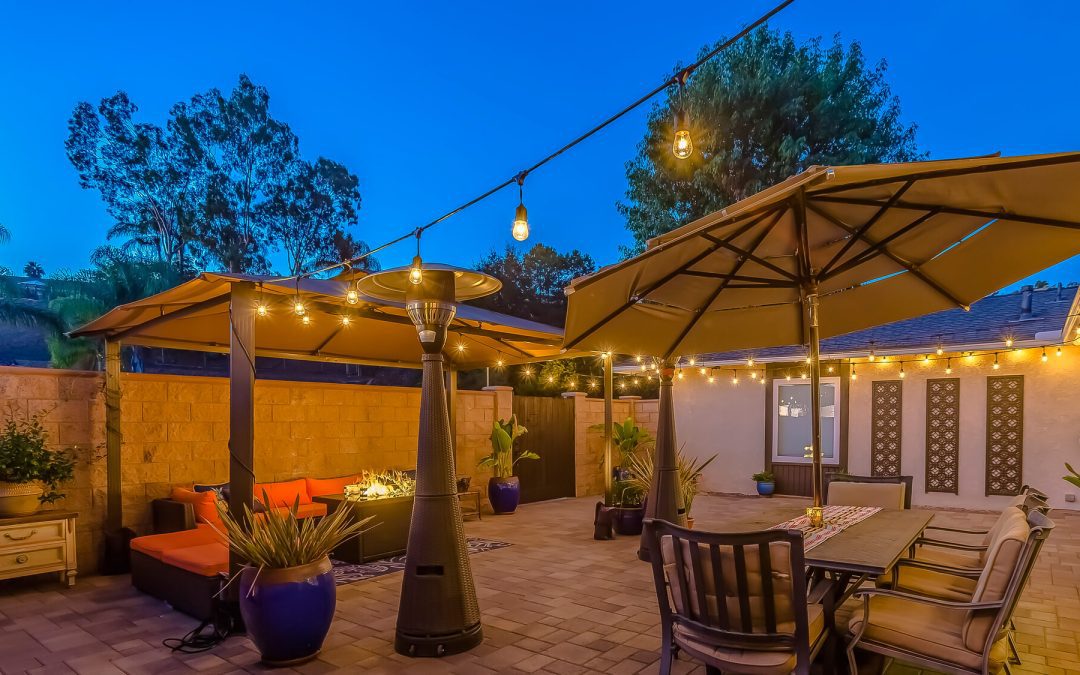Creating the perfect patio involves more than just envisioning its layout and design; selecting the right materials is crucial for aesthetic appeal and functionality. From traditional to modern options, there are many materials to choose from, each offering unique characteristics and benefits. Let’s delve into the world of patio materials to discover which one best suits your style and needs.
1. Concrete: One of the Most Common Patio Materials
Concrete remains a popular choice for patios due to its versatility and affordability. It can be poured into any shape, allowing for endless design possibilities. Additionally, concrete can be stamped, stained, or dyed to mimic the look of pricier materials such as stone or brick, making it a cost-effective alternative.
2. Brick
Brick exudes timeless charm and elegance, making it a beloved choice for traditional and rustic-inspired patios. It is durable, and its warm tones add character to outdoor spaces. While brick requires minimal maintenance, it may be prone to weed growth between the cracks, requiring occasional upkeep.
3. Natural Stone Patio Materials
For a luxurious and sophisticated patio, natural stone is unparalleled in its beauty and durability. Options such as flagstone, slate, and travertine offer distinctive textures and colors, creating a visually stunning outdoor retreat. While natural stone can be more expensive upfront, its longevity and low maintenance make it a worthwhile investment.
4. Pavers
Pavers, typically made from concrete, clay, or natural stone, offer a versatile and DIY-friendly option for patio construction. Pavers are available in various shapes, sizes, and colors and allow endless customization and creativity. Their interlocking design ensures stability and easy replacement of damaged pieces, making them a practical choice for high-traffic areas.
5. Wood
Wooden decks evoke a sense of warmth and natural beauty, perfect for creating a cozy outdoor oasis. While traditional hardwoods like cedar and redwood are prized for their durability and resistance to decay, newer composite materials offer the look of wood with enhanced durability and minimal maintenance requirements.
6. Composite Patio Materials
Composite decking combines wood fibers and recycled plastic to create a durable and eco-friendly patio material. It offers the natural look of wood without the hassle of regular maintenance, such as staining or sealing. Composite decking is resistant to rot, warping, and insect damage, making it an ideal choice for those seeking a low-maintenance outdoor living space.
7. Gravel
Gravel is a budget-friendly option for casual and rustic-style patios. It provides excellent drainage and is easy to install, making it a popular choice for DIY enthusiasts. However, gravel may require periodic replenishment to maintain its appearance and prevent displacement.
When selecting patio materials, there’s no shortage of options to suit every style, budget, and preference. Whether you prefer the classic charm of brick, the elegance of natural stone, or the versatility of concrete, each material offers its own unique advantages. By carefully considering factors such as durability, maintenance requirements, and aesthetic appeal, you can create the perfect outdoor retreat to enjoy for years.
Patio Building FAQs
What are the basic steps involved in building a patio?
- Planning: Determine the size, location, materials, and design.
- Site preparation: Clear the area, level the ground, and assess drainage needs.
- Material selection: Choose between materials like concrete, pavers, bricks, or natural stone.
- Installation: Lay the foundation, install edging, and lay the patio surface.
- Finishing touches: Add desired features like seating, lighting, or landscaping.
How long does it take to build a patio?
The timeframe depends on various factors, including the size and complexity of the project, weather conditions, and the availability of materials and labor. A simple patio installation may take a few days, while more elaborate designs could require several weeks.
Can I build a patio myself, or should I hire a professional?
DIY patio projects are feasible for those with adequate skills and experience, especially for smaller or simpler designs. However, hiring a professional contractor ensures quality workmanship and adherence to codes and regulations.
How do I maintain my patio once it’s built?
Regular maintenance tasks include sweeping or power washing to remove debris, sealing porous materials to protect against stains and deterioration, repairing cracks or damage promptly, and ensuring proper drainage to prevent water-related issues. Follow manufacturer recommendations for specific care instructions based on the patio material.
Crossroads Home Inspections offers inspection services to homebuyers and sellers in St. Louis and the surrounding area. Contact us to schedule an appointment.

